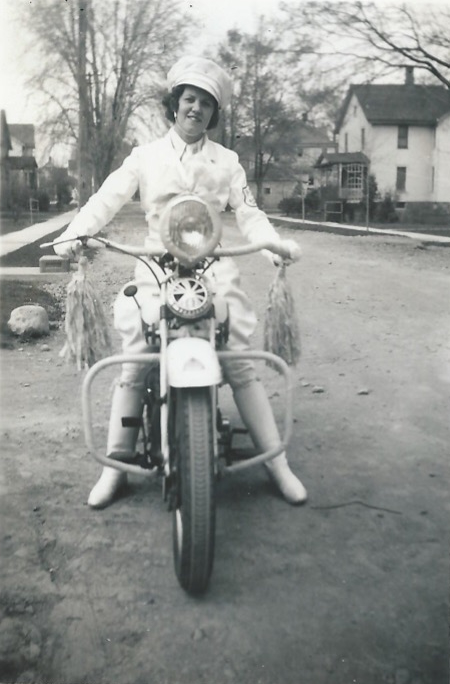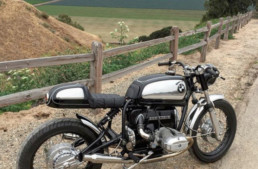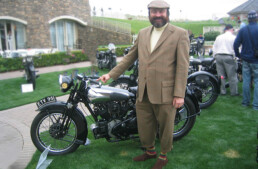In an age in which it is possible to continuously scroll through countless, colorful digital social media images from the motorcycling community, it is refreshing to sit down to enjoy printed books whose pages are filled with black and white photographs that deserve to be carefully studied and understood. Two such examples are Iron Horse Cowgirls and Superbike, both of which were published in 2023. These recent titles share their origins in rich archival collections of photographs placed in historical context, their connections to the American Motorcyclist Association, the friendships between their co-authors, and the numerous fascinating moments of transition in the history of motorcycling they recount.



McKay and Vogl successfully explain the freedoms and constraints of women motorcyclists during the first half of the twentieth century. They tell the stories of Scherbyn and other prominent riders, such as Helen Kiss and Dot Robinson, who put thousands of miles on their bikes and participated in a community filled with events from weekend hill climbs to the first rallies at Daytona and Laconia. All the while, the young women riders tried to earn a few lines in the AMA’s magazine and form clubs, which they eventually did, starting with women’s auxiliaries to men’s clubs and later creating the Motor Maids and WIMA. It was not a simple path, however, and it was one marked by personal hardships. Men known to Scherbyn, for example, sexually assaulted her after blocking her passage with a tree trunk; they were convicted but afterwards she spent far less time at home and far more time on her bike. Women and men competed in “best dressed” competitions with their motorcycles and were expected to maintain a neat appearance and proper decorum at AMA events, which was even more important for the women.
The images in the book offer a visual representation of this history and allow the reader to reflect on a time in America characterized by big smiles on the faces of riders experiencing times of joy amid economic strife. The iconic photo of Louise Scherbyn dressed in white astride her white Indian is but just one moment captured on film worth knowing much more about through this well-researched book.

Whereas Iron Horse Cowgirls is a historical biography informed by a rich collection of images, Superbike is predominantly a book of photography informed by introductory texts and often detailed photo captions. Like Scherbyn, photographer John Owens shot on [mostly] Kodak film. His eye is that of a professional photographer, however, and his objective was to artfully capture the people, places and machines of AMA racing beginning in the mid-1970s. Owens’ photos are nicely complemented by the words of Kevin Cameron, known for his technical motorcycle journalism. The two men reconnected about a decade ago at a MotoGP race at the Circuit of the Americas. Struck by the secrecy and lack of access to the world inside the paddock that now surrounds a sport that was once relatively open, they decided to develop the book together.


Where to find them:
McKay, Linda Back and Kate St. Vincent Vogl. Iron Horse Cowgirls: Louise Scherbyn and the Women Motorcyclists of the 1930s and 1940s. McFarland, 2023. pISBN: 978-1-4766-6946-5 322 pages. $49.95 https://mcfarlandbooks.com/product/iron-horse-cowgirls/
Cameron, Kevin and John Owens. Superbike. An Illustrated Early History. MotoRacing Books, 2023. ISBN: 979-8-218-25250-2191 pages. $75 unsigned. $90 signed. https://superbikebook.com/
[1] Photos from Iron Horse Cowgirls are from the private collection of Louise Scherbyn/Courtesy of Leslie Mason and the late William F. Mason.
[2] Photographs by John Owens.





” Iron Horse Cowgirls ”
IJMS ( International Journal for Motorcycle Studies ) reviewed it in detail quite awhile ago . . Yet more revelations about women in M/C so desperately needed ( especially if the lug heads among us would actually read it !!! )
Bought it ! Love it … two huge thumbs up
Now if someone would write a book about all the women M/C couriers etc from WWI who went on to ride as often and as hard as their male counterparts … literally laying the foundation for all female M/C riders .
( Oh them was some tough as nails ladies back then gents … more than a few who could make the majority of us men look like a bunch of wimps in comparison )
e.g Buy the book … READ the book … learn something … or if you’re a woman …. be inspired and recognize everything you think you’re doing today is cutting edge …. is in reality a case of Been There Done That and she probably did it a whole lot better that you’ll ever do despite all yer digital nonsense .
😎